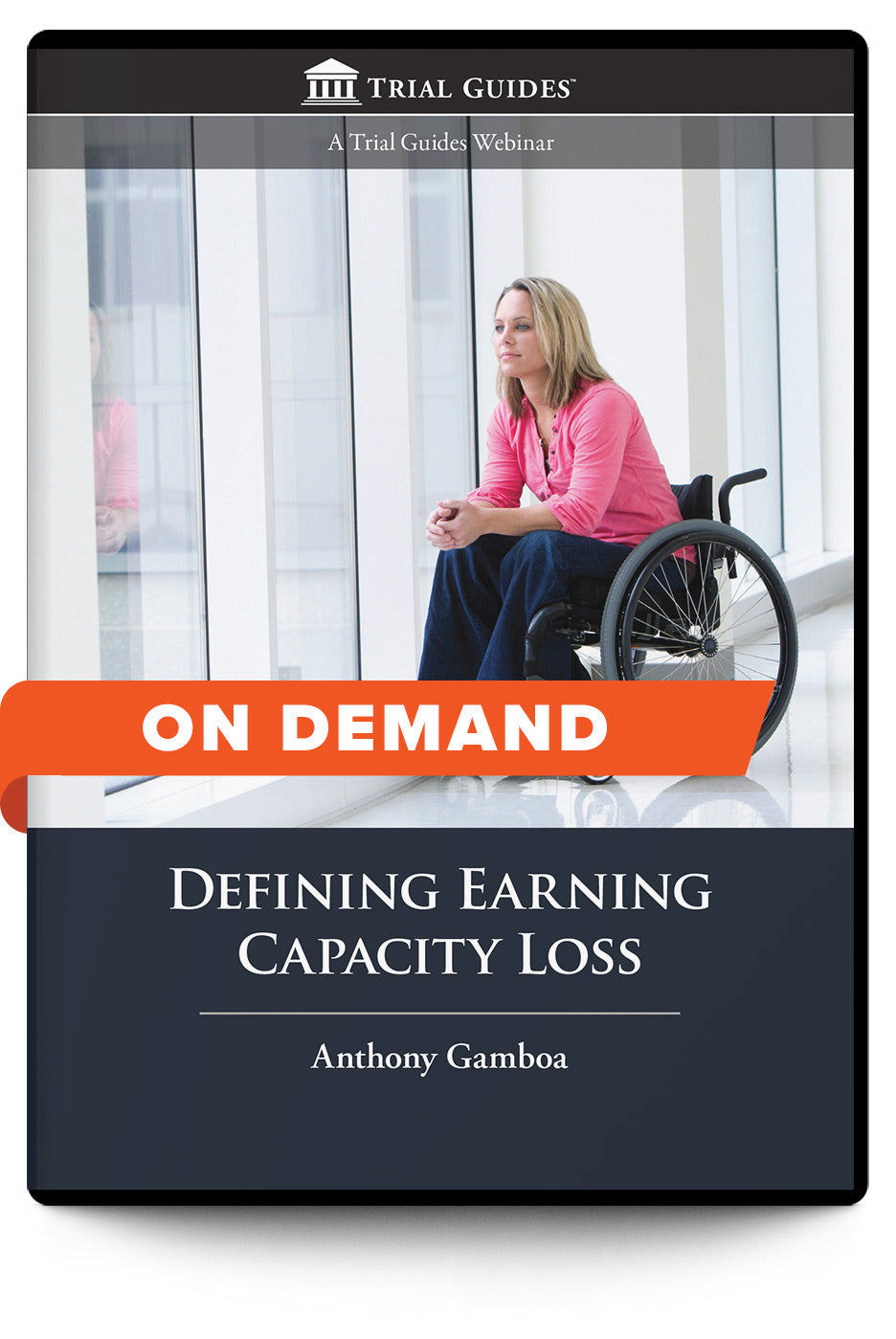Description
Description
Click here for Access Instructions for On Demand Programs
Each user must register individually as they will need their own login to access the program
Calculating your client's financial damages after an injury may seem like simple math. Multiply the rate of pay by the amount of time lost, right? Not quite: if you do this, you are probably missing the client's most serious economic loss.
U.S. government statistics suggest that such a simple approach does not consider what the data show about the long-term consequences of an injury. To consider the actual long-term economic effect of an injury, Trial Guides brings you Defining Earning Capacity Loss, a recorded webinar featuring economist and vocational rehabilitation expert Anthony M. Gamboa, Jr., PhD.
This program provides you with specific information about assessing the economic value of cases involving individuals with a partial or total disability. The seminar focuses specifically on the following:
- Defining "earning capacity loss"
- The difference between "wage loss" and "earning capacity"
- Defining "reduced earnings" and "reduced work-life expectancy" for persons with a disability
- Case studies specific to various types of partial disability
In addition, Dr. Gamboa demonstrates that people with a disability who are employed year-round and full-time earn less on average than their nondisabled counterparts. Then he shows how people with a disability experience a comparative reduction in work-life expectancy. These two facts are true for both men and women, and for individuals at all levels of educational attainment. Data collected by the U.S. Census Bureau illustrate the facts. If you aren’t addressing these issues after a permanent injury, you are not obtaining the full amount of a client's future economic damages.
Finally, Dr. Gamboa presents practical and concrete rules for deposing a defense economist and teaches you how to expose economists’ inappropriate methodologies and biases, which unfairly penalize individuals with disabilities.
Author
Author
Details
Details
On Demand Program: 57 minutes
Original Air Date: 2013




